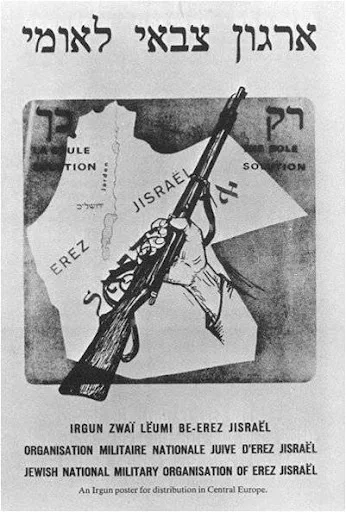Of course. Here is the English translation of that text:
"Since I was young, I have made it a habit/principle never to speak ill of or use a derogatory name for any person or group. Now, after writing a blog post about Israel with the title, 'The Origin of the State of Israel: From a Terrorist Group,' I feel uneasy and uncomfortable."
The short answer is: The main ruling power at the time, the British Government, did indeed officially designate the more radical groups like Irgun and Lehi as "Terrorist Organizations."
Here is a detailed breakdown by organization:
1. The British Government
* Their Position: The British Government was the ruling authority (Mandatory Power) in Palestine at the time and was the primary target of Irgun and Lehi.
* How They Were Designated: Following their attacks, especially catastrophic events like the King David Hotel bombing which killed many civilians and government staff, the British Government officially declared Irgun and Lehi to be "terrorist organizations" and condemned them in the strongest terms. This terminology was explicitly used in the British Parliament and in official documents. For the British, these groups were terrorists attacking their administration with illegal methods.
2. The United Nations
* Their Position: The UN was a new organization, formed in 1945, and was attempting to mediate a solution to the Palestine problem.
* How They Were Designated: While the UN as a body was more reserved with direct, official labels, it strongly condemned their violent acts. A key event was the assassination of the UN's own peace mediator, Count Folke Bernadotte, by the Lehi group. Following this, the UN Security Council passed Resolution 57, which explicitly called on the provisional government of Israel to bring the "terrorist groups" to justice. This is clear evidence that the UN itself viewed the act as terrorism.
3. The United States
* Their Position: The U.S. position was more complex. On one hand, it had to support its ally, Great Britain, and maintain relations with Arab nations. On the other hand, there was significant sympathy for the Jewish cause after the Holocaust and political pressure from Zionist lobby groups within the U.S.
* How They Were Designated: The U.S. government officially condemned the acts of violence but was less forceful in applying labels than the British. However, a crucial point is that in 1948, Albert Einstein, along with other prominent Jewish intellectuals, wrote a letter to the New York Times denouncing Menachem Begin (leader of Irgun) and his political party, describing them as "terrorists" and "fascist" in their methods. This shows that even within the United States, the actions of these groups were viewed as terrorism by many.
Comparison and Key Differences
While there are similarities in how Hamas is designated today and how the Zionist groups were designated in the past, there are also critical differences.
* Historical Context: The 1940s was an era of decolonization, with many national liberation movements emerging worldwide. The political and legal definition of "terrorism" was not as precise or as widely codified as it is today in the post-9/11 era.
* The Outcome: This is arguably the most significant difference. The movements of Irgun and Lehi were ultimately successful. Their leaders became prime ministers of Israel, and their main armed force, the Haganah, became the state's official military (the IDF). As the saying goes, "history is written by the victors." Once they succeeded in establishing a state, their past actions could be reframed as a "national liberation struggle" or a "war of independence." Hamas, in contrast, has not yet achieved its stated goal of statehood and remains a non-state actor in conflict with an established nation.
* The Target: The primary target of the Zionist groups was the "British colonial government." The primary target of Hamas is the "State of Israel and its citizens." This distinction also influences how their actions are perceived internationally.
Conclusion
The historical record clearly shows that the same types of entities that label Hamas a terrorist group today (especially the British government and the UN) also used the "terrorist" label for groups like Irgun and Lehi in the past.
However, the key difference lies in the outcome. The success of becoming a state-builder versus remaining an unsuccessful armed resistance movement is the decisive factor in how these groups are remembered and defined today.







No comments:
Post a Comment